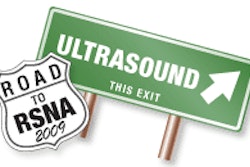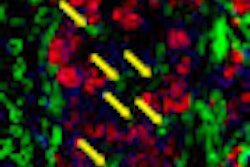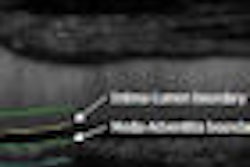Researchers from San Giovanni di Dio General Hospital in Gorizia examined seven patients in this small study, and compared the accuracy of second-look ultrasound both with and without MRI volume navigation and fusion imaging.
Patients were first examined on a 1.5-tesla MRI scanner (Achieva, Philips Healthcare, Andover, MA) using a T1-weighted THRIVE sequence, while second-look ultrasound (Logiq E9, GE Healthcare, Chalfont St. Giles, U.K.) was also performed.
The volume navigation technique (VNav, GE Healthcare) involved the use of dual electromagnetic systems that consisted of a transmitter placed close to the patient and two small magnetic receivers attached to the ultrasound scanner probe's bracket.
Breast MRI scans revealed eight additional lesions in the patients. Second-look ultrasound with the magnetic navigation technique detected seven of eight lesions (87%), versus two of eight (25%) without it. The experimental procedure's sensitivity was 75%, versus 50% for the control group, although it had a lower specificity (50% versus 60%).
The study indicates that the volume navigation technique could help reduce the number of biopsies of suspicious lesions detected on breast MRI scans, according to presenter Dr. Alfonso Fausto. The study's ramifications are limited by the small patient size, however, according to the presenters.



















